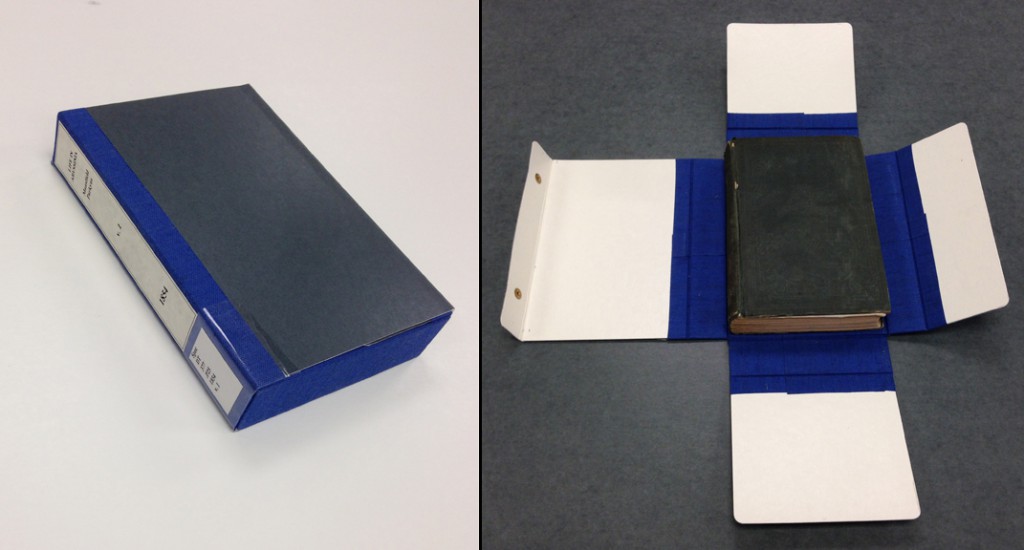Previously on this blog I’ve talked about encapsulation as one example of a preservation measure used to ensure continued access to the materials in Special Collections. In this post, I am going to address another enclosure method used to protect special collections’ materials – boxes. As you can see from the above photo, books can have damaged spines, detached boards or covers, and even damaged text blocks with loose pages. Often, a box is the easiest and most cost effective way to stabilize books suffering this type of damage. Not only does the box keep all the loose pieces together, but it also protects the book from further damage while being stored and/or handled.
There are many variations of boxes used for books, including phase boxes and clamshell boxes. There are several vendors that offer these boxes for purchase in standard sizes, however it is best to have a box that fits the book exactly. If a box is too big, the book can easily slide around, causing damage and unnecessary wear and tear. A box that is too tight around the book can also cause damage to the item. Because of this, many vendors also offer custom sized boxes made to order, to better fit the intended book. However, ordering custom size boxes can get very expensive, especially if one has many volumes that need to be boxed.

An example of a clamshell box. Clamshells are a bit more time consuming to produce, so they are usually only made in special cases
Our solution at Miami University Libraries is to custom make our own phase and clamshell boxes in house. We make several variations of boxes, depending on factors such as the weight, thickness, condition, and value of the item to be boxed. Most of the boxes produced by the preservation lab are made by our excellent student workers. At the moment we have two ongoing enclosure projects in the works. One student is finishing up boxing volumes from the Western College Memorial Archives. Once the volumes are boxed, they will be returned to the archives, where they will be cataloged and reshelved.

An example of a folder stock four flap box. These boxes are usually made for thinner materials such as pamphlets.
Our other enclosure project is the Erodelphian Society Collection and the Union Literary Society Collection. Both of these collections were once the working libraries of two of Miami’s three literary societies. For the project, we are systematically going through the collection and pulling volumes that need the extra protection of a box. Our student worker then dusts each item and creates a box for it. The boxed items are then returned to the shelves, where they await cataloging.
Ashley Jones
Preservation Librarian


